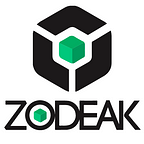How to Build a Decentralized Token Bridge Between Ethereum and Binance Smart Chain?
Blockchain technology keeps growing, and it has modified immensely since 2008 when Satoshi Nakamoto presented the first cryptocurrency, Bitcoin, to the world. Bitcoin fetched along with Blockchain Technology.
Since then, multiple blockchain platforms have been launched. Every blockchain has unique attributes and functionality to fill the gap between blockchain technology and its real-world implications. Notwithstanding the amazing advantages of the blockchain, such as its decentralized nature, the stability of records, distributed ledger, and smart contract technology, a major hindrance still involves blockchain’s mass adoption, which is the lack of compatibility.
What are blockchain bridges?
A blockchain bridge allows interoperability and makes a connection between two individual blockchains that perform under various consensus mechanisms. More clearly put, blockchain bridges permit two different blockchains to interact with each other. Blockchains can transfer smart contract enactment instructions, transfer tokens, and transmit data & resources back and forth between two self-reliant blockchains as they no longer remain limited by their origin.
These blockchains can even access the off-chain data, like access to the live chart of the stock market. Some of the widespread used blockchain bridges are xPollinate, Matic Bridge, and Binance Bridge. Blockchain bridges deliver the following advantages to the users:
- Users can leverage the uses of two distinct blockchains to create dApps instead of only from the hosted blockchain. It demonstrates a user can deploy dApp on Solana and can force the dApp with Ethereum’s smart contract technology.
- Users can transfer tokens from a blockchain that demands high transaction costs to another blockchain where transaction costs are relatively more affordable.
- With the capability to transmit tokens presently, users can shift from a combustible cryptocurrency to Stablecoins instantly without taking the help of intermediates.
- One can also host digitalized assets on a decentralized application of a different blockchain. For example, one can develop NFTs on the Cardano blockchain and host them on the Ethereum marketplace.
- Bridging lets users perform dAPPs across numerous blockchain spheres.
Types of Blockchain Bridges
To understand how blockchain bridges work, we first require to know how many varieties exist. Nowadays, two types of blockchain bridges are available — a federated bridge and a trustless bridge. Now, let’s apprehend their working mechanism.
Federated bridge
A federated bridge is also called a centralized bridge. It is effectively a kind of centralized exchange where the users connect with a pool that can at times be a company or a mediator. If the token transfer appears for BNB and ETH, there will be two enormous pools; one including BNB and another including Ether.
As soon as the sender launches the transfer with Ether, it gets added to the pool. And the pool sends him an equal amount of BNB out of the second pool. The centralized authority charges a small fee to restrain this technique. Nevertheless, the fee is a small amount that users can pay suitably.
Trustless bridge
These are the completely decentralized bridge that eradicates the role of any third party. Trustless blockchain bridges do not use API to administer the function of burning and minting the token. Rather, smart contract acts a critical role here.
When a user starts the token transfer via the trustless bridge, the smart contract freezes his current cryptos and delivers him a copy of equivalent tokens on the unique network. The smart contract then creates the token since it comprehends that the user has already frozen or burnt tokens on another network.
How to build a decentralized token bridge between Ethereum and Binance Smart Chain?
With the help of this procedure, you can learn how to build a completely decentralized bridge between Ethereum and Binance Smart Chain using the solidity programming language. Nevertheless, many Blockchain bridges use APIs to transfer tokens and information, APIs are susceptible to hacks and can send fraudulent transactions once hacked. So, we will create the bridge fully decentralized by extracting the API from the mechanism.
Closing Thoughts
The source of blockchain bridges has created blockchain as a more prevailing technology. Bridging solutions also assist the Decentralized Finance DeFi development and application design that delegates the prospectus of a decentralized financial system. By allowing the connections between various blockchains or working together, blockchain bridges aid users running toward the next-generation decentralized system. Thus, it aspires to end the reign of the centralized system from the enterprise ecosystem.
Looking for compatibility to optimize or Create your own Binance Smart chain. Check out our Zodeak solutions and get more information about our services.
